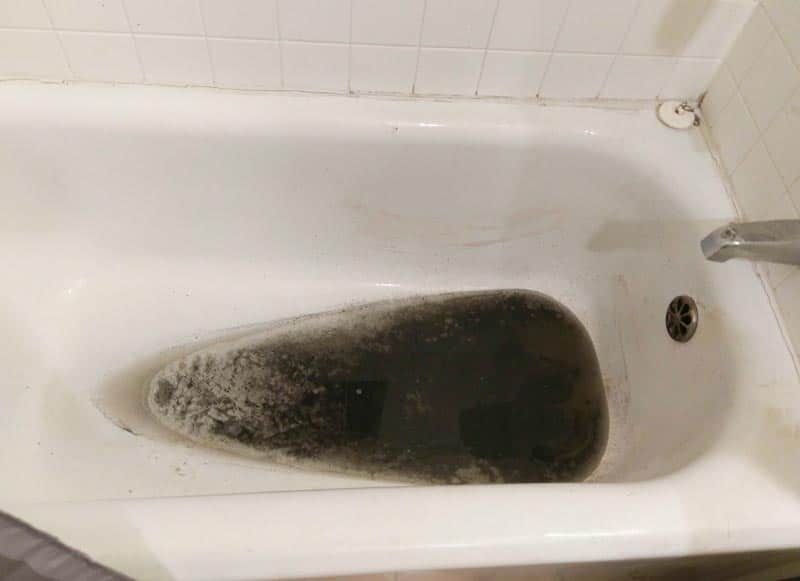Discovering the Causes of Drainage in the Bathtub
Discovering the Causes of Drainage in the Bathtub
Blog Article
What are your ideas with regards to Why is Sewage Backing Up Into My Bathtub??

Sewage back-up in the tub can be a traumatic and unhygienic trouble for any kind of homeowner. Not only is it inconvenient, however it additionally poses significant wellness dangers and suggests underlying issues with the plumbing system. Recognizing why sewer is coming up with the bathtub is essential for taking ideal activity to address the problem effectively.
Introduction to the Issue
Common Factors for Sewage Backup
Blockages in the Drain Line
One of the most usual root causes of sewer back-up is an obstruction in the drain line. This can occur because of the build-up of particles, grease, or international things in the pipes, protecting against appropriate circulation and triggering sewage to support right into your bathtub.
Tree Origin Intrusion
Tree roots seeking moisture and nutrients can infiltrate sewer lines via small fractures or joints. In time, these roots can expand and expand, triggering significant damages to the pipelines and leading to sewer backup issues.
Recognizing the Trouble
When sewage starts backing up right into the bathtub, it's a clear sign of an issue with the drain system. The wastewater that should be moving far from your home is rather locating its way back into your home, which can cause considerable damage and health hazards.
Potential Reasons
Numerous factors can contribute to sewage back-up in the bathtub. From clogs in the sewer line to issues with the plumbing facilities, identifying the source is crucial for locating an option.
Aging Framework
Older homes might have dated plumbing systems that are much more prone to deterioration, splits, and degeneration. As pipelines age, they end up being more susceptible to leaks and obstructions, raising the likelihood of sewage back-up cases.
Heavy Rainfall or Flooding
Throughout periods of heavy rainfall or flooding, the sewer system may end up being overloaded with excess water, creating backups and overflows. This can lead to sewage supporting right into bath tubs and other components inside the home.
Indicators of Sewage Backup
Foul Odors
Unpleasant smells originating from drains pipes or fixtures, especially in the bathroom, might indicate sewage backup problems. These odors are frequently strong and consistent, indicating an issue that calls for immediate attention.
Slow Draining Fixtures
Bathtubs, sinks, and toilets that drain gradually or otherwise in any way could be experiencing sewer back-up. If several fixtures are impacted all at once, it's likely that the problem originates from an usual point, such as the major sewage system line.
Gurgling Sounds
Odd gurgling or gurgling sounds coming from drains pipes when water is running somewhere else in your house are indicative of air caught in the plumbing system. This air accumulation can arise from sewer back-up and must be checked out promptly.
Health And Wellness Dangers Connected With Sewer Backup
Contamination of Water Supply
Sewer back-up can infect the water supply in your house, posing a significant health risk to you and your household. Direct exposure to polluted water can result in intestinal problems, skin infections, and other health problems.
Mold and mildew Growth
Moisture from sewage back-up can produce perfect problems for mold and mildew development in your home. Mold spores can worsen respiratory system issues and trigger allergic reactions in delicate individuals, making prompt cleaning essential.
Spread of Condition
Sewage contains unsafe germs, viruses, and parasites that can trigger a series of illness, consisting of hepatitis, cholera, and gastroenteritis. Entering contact with sewage or polluted surfaces puts you in jeopardy of infection.
Cleaning Up After Sewer Backup
Disinfection Procedures
Completely decontaminate and disinfect impacted locations after sewer backup to remove harmful microorganisms and protect against mold growth. Usage appropriate cleansing items and safety gear to make certain secure and reliable cleanup.
Reconstruction of Impacted Areas
Fix any kind of damage to flooring, walls, or fixtures triggered by sewer backup. Depending upon the degree of the damages, you may need to change carpets, drywall, or various other materials to restore your home to its pre-loss condition.
Immediate Actions to Take
Turning Off Supply Of Water
In the event of sewer back-up, it's vital to turn off the water supply to prevent more contamination and damage. Locate the primary water shutoff valve in your house and shut it off till the problem can be settled.
Contacting a Specialist Plumber
Taking care of sewage back-up is not a do it yourself job. Get in touch with a certified plumber with experience in handling sewage-related problems to assess the circumstance and execute required fixings or cleanups.
Preventing Contact with Polluted Water
Up until the sewer backup is dealt with, stay clear of contact with polluted water to avoid the spread of germs and microorganisms. Wear protective equipment if you should be in the damaged location and clean your hands thoroughly afterward.
Preventive Measures
Regular Maintenance of Drain Lines
Set up normal evaluations and maintenance of your sewage system lines to recognize and address possible concerns before they rise right into major troubles. This can include clearing out debris, inspecting for tree origin breach, and repairing any type of broken pipelines.
Mounting Bayou Shutoffs
Consider installing backwater valves in your plumbing system to prevent sewage from receding right into your home throughout periods of heavy rainfall or flooding. These valves instantly close when water starts backing up, shielding your home from contamination.
Appropriate Disposal of House Waste
Stay clear of flushing anything other than toilet tissue and human waste down the bathroom to stop blockages and clogs in the sewer line. Dispose of grease, oil, and other house chemicals appropriately to reduce the threat of plumbing issues.
Why Is Water Backing Up in My Bathtub When I Flush My Toilet?
What to do about a sewer line clog
First, don’t bother with plunging. No amount of plunging will dislodge the clog in a sewer line. The clog is too far away. Plungers are for clogs in the toilet itself, not the sewer line. Plus, the most likely causes of a sewer clog are:
Tree roots Flushed toys or feminine products Grease buildup Those items don’t move easily. And in the case of tree roots, the roots need to be cut out of the pipe and the pipe will need to be repaired.
You’ll need a closet auger. A closet auger is a type of plumber’s snake with a protective cover to keep from scratching the delicate porcelain toilet. If the clog is further down, you may need to remove the toilet or use one of your cleanouts to get to the clog.
We also recommend doing a video inspection of the drain to ensure that the cause of the clog has been completely removed. Otherwise, you could have the same problem again in a few days or weeks.
https://mspplumbingheatingair.com/blog/why-is-water-backing-up-in-my-bathtub-when-i-flush-my-toilet

Do you like reading up on Why is There Sewage Coming Up Through the Bathtub? Write a remark directly below. We will be delighted to listen to your feelings about this entry. In hopes that you visit us again soon. Make sure you take the time to distribute this blog if you enjoyed reading it. Thank you so much for going through it.
Customer Reviews
Report this page